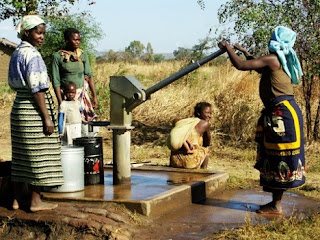Conjunctive Use of Water and Resulting Challenges in Management in Africa

Freshwater resources are vital to Africa's livelihoods, food security and power generation ( Marisa Goulden et al., 2009 ). However, with a range of issues such as increasing demand for water, rapidly growing competing uses, climate change, water users together with the governing institutions are responsible to adapt to the new dynamics of freshwater ( Marisa Goulden et al., 2009 ). This blog is written for one of the issues of freshwater in Africa - the transboundary nature of water resources ( UNDP, 2006 ). Fig.1: Transboundary water resources in East and Southern Africa According to the definition of a transboundary aquifer on the United Nations International Law Commission's Draft Articles on the Law of Transboundary, it is defined as 'an aquifer, parts of which are situated in different countries' ( Article 2c, Stephan 2009 ). It is estimated that 90% of all Africa's water resources are located in river basins that are shared by two or even more countries ( UN...





